Levin Center for IHMC Research wins AIA Florida’s People’s Choice Award

Published 7.30.18
The Florida Association of the American Institute of Architects released the final results of its Florida People’s Choice competition this week and thanks to many of you, the Levin Center for IHMC Research came out on top. For the past several weeks we had sent out requests that asked people to go online and vote for the Levin Center in the AIA competition. We really appreciate that so many people did.
The 30,000-square-foot Levin Center was designed by the Pensacola firm Quina Grundhoefer and was built in 2016. We also owe a big thanks to Pensacola attorney Fred Levin, who donated $1 million to IHMC to help the institute complete the facility.
Carter Quina was the lead architect on the project and had a great quote after he heard the news about the People’s Choice Award. “As architects, we of course like it when our peers evaluate our work and recognize us. But to have your design receive recognition from everyday people is even more special. If people love what we’ve designed, then we’ve done our job. This is really a great honor for us and Pensacola.”
Here is AIA Florid’s press release
Kernagis wins Outstanding Young Scientist Award
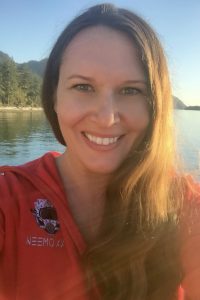 Published 7.9.18
Published 7.9.18
IHMC Research Scientist Dawn Kernagis is the 2018 recipient of the Young Scientist/Medical Doctor Award that is presented annually by the Undersea and Hyperbaric Medical Society.
The award, which was presented at the society’s annual banquet in Orlando, recognizes the work of a young scientist whose performance is consistently outstanding.
“I am beyond grateful for this award,” said Kernagis. “I have been blessed to be surrounded by inspirational colleagues and advisers while transitioning from being a full-time diver to a full-time researcher. This is such an unexpected surprise.”
Kernagis, who was inducted into the Women Divers Hall of Fame in 2016, spent her early career as a diver and leader of underwater explorations and conservation projects around the world. She spent more than a decade with a team of divers exploring Wakulla Springs and its deep-water caves. She also was selected in 2016 to become one of six crew members for NASA’s undersea mission, NEEMO 21.
Kernagis came to IHMC after completing her doctorate at Duke University. She and colleagues at the institute are focused on identifying ways to optimize performance and resilience for humans working in extreme environments.
She is currently leading an Office of Naval Research study to investigate potential human fuels for cold-water performance. She also is leading a NASA Translational Institute-funded study on how the brain lymphatic system responds to simulated microgravity.
In addition to her research, Kernagis co-hosts IHMC’s podcast, STEM-Talk, with the institute’s founder and director, Ken Ford. IHMC, a not-for-profit research institute that’s part of the Florida University System, pioneers technologies aimed at leveraging and extending human capabilities.
“Dawn certainly deserves this award,” said Ford. “She is indeed an outstanding scientist and her colleagues here at IHMC are quite happy for her. This is another example of the high caliber of talent we are so fortunate to have at the institute.”
The Undersea and Hyperbaric Medical Society is an organization based in the U.S. which supports research on matters of hyperbaric medicine and physiology.
Levin Center for IHMC Research nominated for architectural award
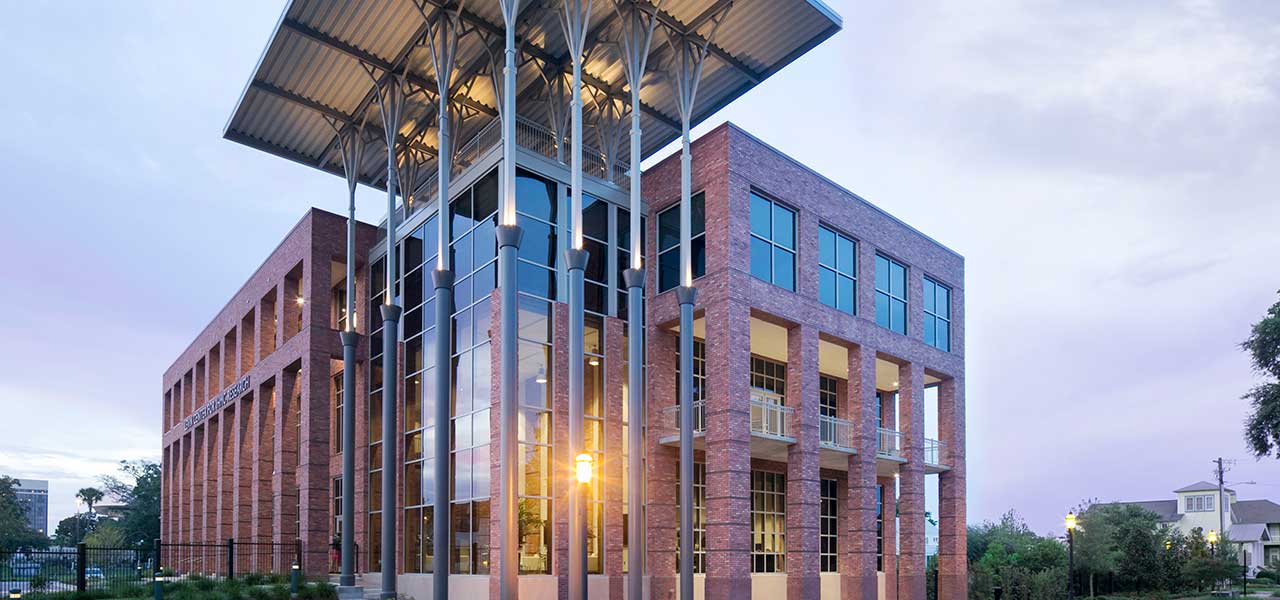
Published 6.28.18
The Levin Center for IHMC Research is one of 39 buildings nominated for the fifth annual People’s Choice Competition launched by the Florida Association of the American Institute of Architects and the Florida Foundation for Architecture.
People from around the world can go online to vote for the Levin Center as well as their other favorite buildings in Florida. The buildings that have been nominated were built in the past five years and contribute to the happiness and prosperity of Florida residents.
The 30,000-square-foot Levin Center was designed by Quina Grundhoefer Architects and won an award of excellence at last year’s meeting of the Florida Northwest Chapter of the American Institute of Architects.
Help put Pensacola on the map and go online by July 20 and vote for the Levin Center at floridapeopleschoice.com. Buildings are listed by the structure’s name and city. The results of the voting will be announced at the American Institute of Architects Florida annual convention on July 21.
Ewers donate $500,000 to IHMC
Published 6.21.18
Ron and Phyllis Ewers have donated $500,000 to the Florida Institute for Human and Machine Cognition, a gift that will allow the research center to make some needed improvements to its glass-enclosed building in downtown Ocala.
IHMC’s Ocala facility was once the home of Marion County’s main branch of its public-library system. Built in the 1960s, the building’s futuristic look became a focal point of Ocala’s downtown. In 2009, the then vacant facility fell into the hands of IHMC, a not-for-profit research institute that is part of the Florida University System with branches in Ocala and Pensacola.
“I was so glad to see IHMC move into the building,” said Ewers, who moved to Ocala in the 1970s and serves on the institute’s board of directors. “The building and the work that goes on at the institute has really become one of Ocala’s jewels.”
One of the distinctive features of the building is the skylight in the center of the roof. But after 60 years, the glass in the skylight has taken on a smoky look.
“Thanks to this gift, we will be able to replace the roof and skylight,” said Laurie Zink, development and community outreach director for the Ocala operation. “We will be able to make other improvements to the building as well. We are so fortunate to have people in our community like Ron and Phyllis.”
Ewers is president of Ewers Consulting in Ocala and has been part owner of a number of companies, including Classic Fire, which is known for its innovations in fire-fighting equipment. Before that, he was president of E-One, one of the world’s largest manufacturers of fire trucks and equipment.
Over the years, Ewers and his wife have also helped fund IHMC’s outreach programs, which range from an evening lecture series to Science Saturdays, a hands-on science program for third-, fourth- and fifth-graders.
“It has just been such a privilege to be on IHMC’s board,” said Ewers. “The institute really has been a great addition to Ocala.”
Studers Donate $1 Million to Further IHMC New Initiatives
Published 4.17.18
Quint and Rishy Studer have generously donated $1 million to the Florida Institute for Human and Machine Cognition. Studer said the gift to IHMC was a natural step for him and his wife, Rishy.
“When I taught special education, the whole goal was to maximize a person’s capabilities. When we formed the Studer Group, it was the same thing…our mission was about maximizing human potential. And that’s what the Studer Community Institute and EntreCon and CivicCon are also about. So, when you look at what IHMC does, it also strives to maximize people’s human potential. That’s why this gift just feels like a natural stair step for Rishy and me.”
IHMC is a not-for-profit research institute that has grown into one of the nation’s premier research organizations with world-class scientists and engineers investigating a broad range of topics related to building technological systems aimed at amplifying and extending human cognition, perception, locomotion and resilience. The institute is part of the Florida University System and is based in Pensacola with a branch in Ocala.
“Quint told us we could use the gift for anything we want, which was great,” said IHMC co-founder and CEO Ken Ford. “But when I brought up the work we’re doing in human performance, which is a relatively new area for us, he seemed to really like the idea of helping us expand our research into this area.”
Much of the IHMC’s work in human performance is focused on humans in extreme environments, such as space, undersea, and high-performance military aircraft. Ford is assembling a cadre of top researchers to employ science and technology to first understand the hazards associated with humans in extreme environments and then to build systems to mitigate those risks.
“The military aircraft is an extreme environment. Astronauts are continuously placed in ridiculously extreme environments. And military divers also face extreme conditions,” said Ford. “Most of the communities we serve are outliers in the human species. These are high-performing humans who are regularly subjected to hazardous environments, and we want to understand the nature of the hazard and how the hazard might be mitigated.”
Studer said he and his wife have long been admirers of Ford and the institute. “I strongly believe you don’t bet on the what…you bet on the who. So, when you look at IHMC over the years, they’ve had solid leadership and world-class scientists. So Rishy and I are investing in the who…the people at IHMC, not the building and not even the science. We’re investing in the who, the people of IHMC.”
Former NFL Coach Joins IHMC
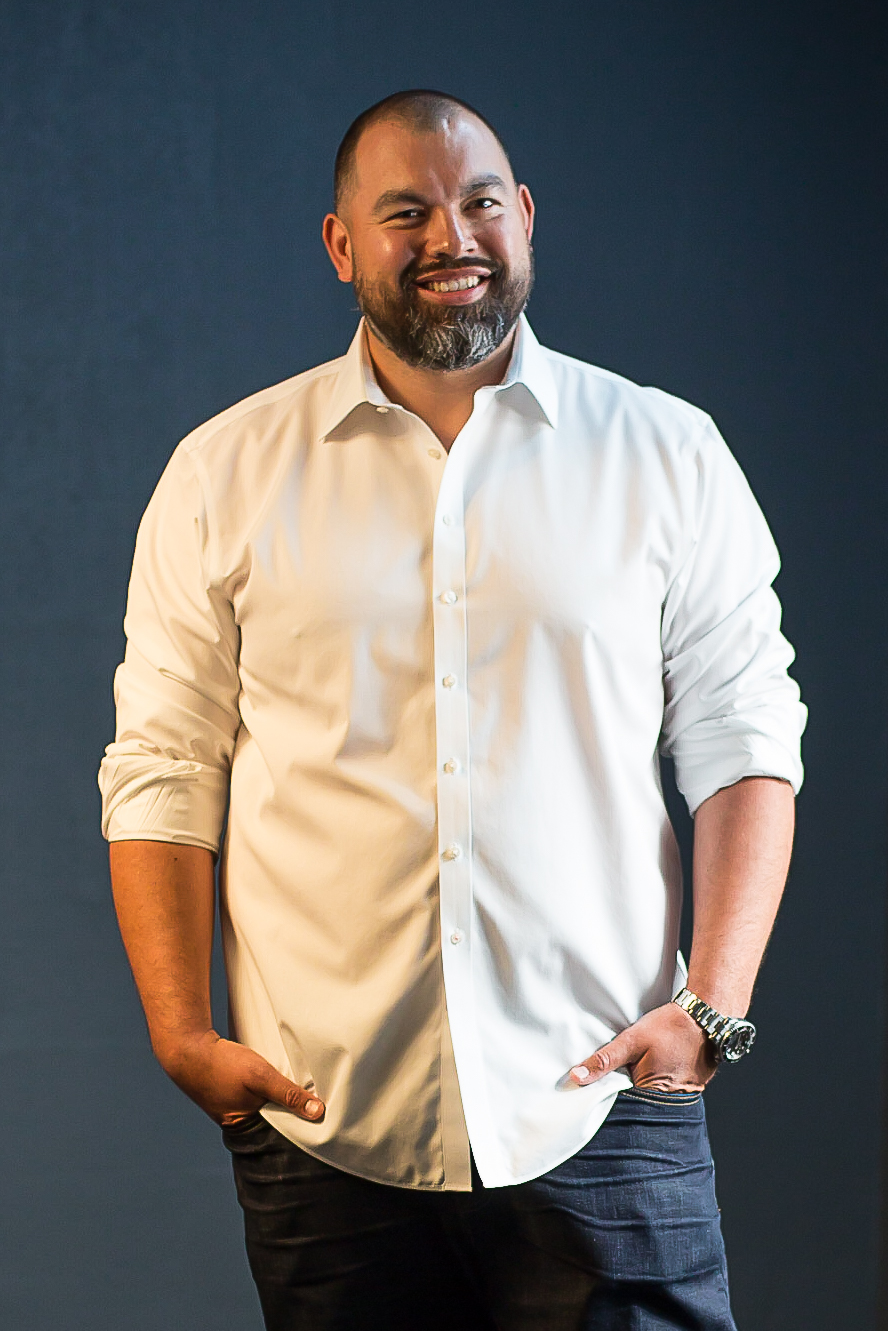 Published 4.9.18
Published 4.9.18
The former Head Strength and Conditioning Coach for the Oakland Raiders who has also worked with the Department of Defense on pioneering human performance programs joins IHMC as the High Performance Director.
Joe Gomes has 17 years of international experience as a head coach and high-performance director responsible for developing staffs and systems that evaluate and prepare elite professional athletes and the elite warfighter for peak performance.
As Gomes transitions into his new role within IHMC, he is focused not only on supporting existing research in human performance and resilience, but also looking to draw from IHMC’s collective expertise to support high performing and elite populations with actionable solutions and countermeasures. He is passionate about supporting career longevity in high performing populations.
“Over the past several years we have broadened our research on human performance and resilience,” said IHMC co-founder and CEO Ken Ford. “Joe brings a wealth of real-world experience in these areas to IHMC and will contribute a great deal to the research we’re doing along these lines.”
In addition to his time with the Oakland Raiders, Gomes spent 2007 to 2010 as the NFL combine preparation director for EXOS, a human performance company. He worked with 35 first-round draft picks, 13 top-10 picks and four first-overall picks, including quarterbacks Matt Ryan and Matt Stafford as well as offensive tackle Jake Long, who was picked first overall in the 2008 NFL draft.
As the Director of Performance for EXOS, Gomes was responsible for the performance systems in four world-class training facilities in the U.S. and five international satellite locations. He worked with teams and players in the NFL, NBA, MLB, NHL, MLS, international professional rugby and soccer teams as well professional tennis and track-and-field athletes.
Prior to joining the Oakland Raiders in 2015, Gomes was the Senior Advisor and Performance Director for the United States Army Special Operations Command at Fort Bragg, N.C.
IHMC scientist wins international recognition
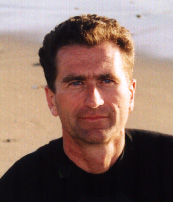 Published 12.15.17
Published 12.15.17
Peter Pirolli of the Florida Institute for Human and Machine Cognition is joining an elite group of global inventors whose patents and research have helped improve the world’s quality of life.
The National Academy of Inventors named Pirolli and 154 other inventors from around the world to its class of 2017 NAI Fellows. Election as an NAI fellow is among the highest professional accolade bestowed to academic inventors at universities and research institutions worldwide.
Before joining IHMC earlier this year, Pirolli was a research fellow in the Interactive Intelligence Area at the Palo Alto Research Center (PARC) where he studied human information interaction.
“This is a wonderful recognition for Peter,” said IHMC founder and CEO Ken Ford. “Peter is a leader the field of complex human-information interaction systems. It doesn’t surprise me that NAI would name Peter a fellow. Peter holds 74 patents and is among the most talented and versatile researchers that I know.”
With the election of the 2017 class, there are now 912 NAI Fellows worldwide who collectively hold more than 32,000 patents. NAI fellows have helped create more than 9,400 technologies and companies which have generated 1.3 million jobs and more than $137 billion in revenue.
“To say I’m humbled by being named an NAI Fellow is an understatement,” said Pirolli. “I have worked with so many great people over the years and this recognition would have never happened without their friendship and support.”
Pirolli joins Ford and five previously elected NAI Fellows affiliated with IHMC, including researchers William J. Clancey and David P. Fries, and board members William S. Dalton, Alain T. Rappaport and T. Dwayne McKay.”
Before working at IHMC and PARC, Pirolli was a professor in the School of Education at the University of California Berkeley. He received his doctorate in cognitive psychology from Carnegie Mellon University in 1985 and is the author of “Information Foraging Therory: Adaptive Interaction with Information. He also is currently an associate editor for the journal Human Computer Interaction.
Airport display showcases IHMC Research
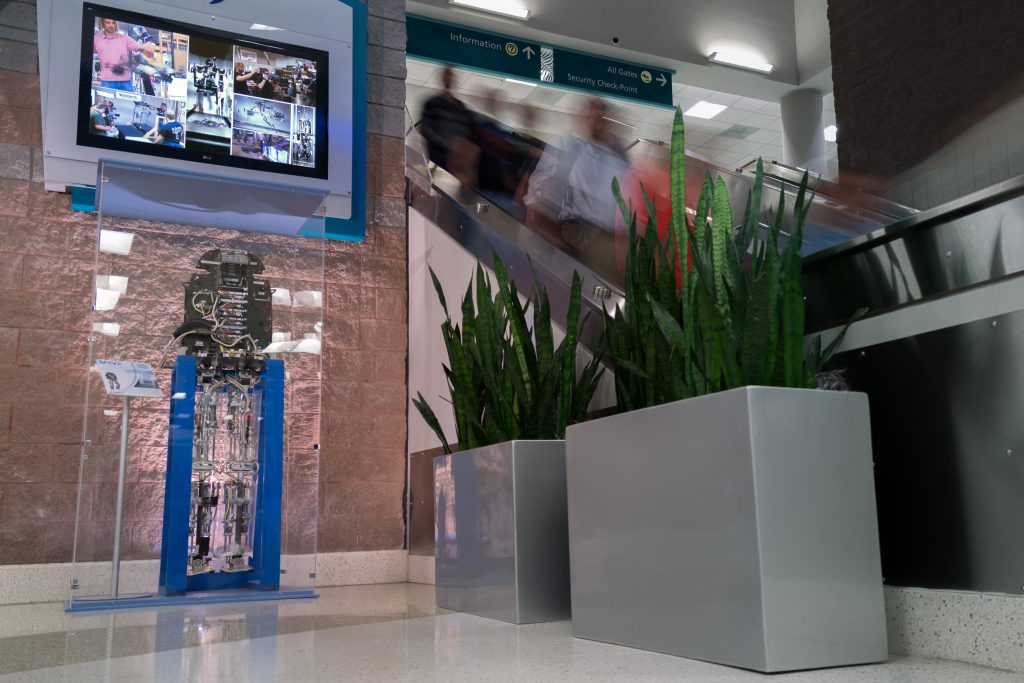
Published 11.2.17
The next time you’re passing through the Pensacola International Airport, be sure to check out the IHMC research display. Several IHMC robots, including the M2V2 humanoid, Spring Flamingo, Mina Exoskeleton, and tBot, will be on display at the airport on a rotating basis.
The display case is located at the main entrance of the airport next to the escalator. There is a monitor above the display case that highlights many areas of IHMC’s research. Brix Design in downtown Pensacola designed and fabricated the acrylic case that houses the robots.
The current robot in the display is M2V2, developed by IHMC in collaboration with the MIT Leg Laboratory, Yobotics, Bucknell University, Delft University of Technology, University of Michigan, and Honda Research Institute. It will be featured until the Spring of 2018.
The next robot on display will be the NASA-IHMC X1 Mina Exoskeleton, a robotic device developed for mobility assistance for abled and disabled users. We also will continue to update the video feed on the monitor to showcase new IHMC research.
Please let us know your thoughts as you view this display and be sure to tell friends to stop by next time they are at the airport.
STEM-Talk wins first place
Published 10.4.17
IHMC’s podcast STEM-Talk won first place in the science and medicine category at the 12th Annual People’s Choice Podcast Awards on Sunday.
The international competition featured more than 2,000 nominees in 20 categories. STEM-Talk also was a runner-up in the People’s Choice Award, the grand prize of the competition.
STEM-Talk bills itself as “conversations with some of the most interesting people in the world of science and technology.”
“We really didn’t expect this,” said Ken Ford, IHMC’s founder and CEO, who came up with the idea for STEM-Talk. “Our podcast is just a little more than a year old and we’re thrilled to receive this kind of recognition so soon.”
STEM-Talk uploads to iTunes every other Tuesday and is nearing its 50th episode.
Ford co-hosts the podcast with IHMC research scientist Dawn Kernagis. Veteran NASA astronaut Tom Jones, who also is a senior research scientist at IHMC, has co-hosted several episodes of STEM-Talk. STEM-Talk is edited by IHMC Senior Creative and Multimedia Specialist William “Billy” Howell and Communications Director Randy Hammer is the show’s producer.
The Oct. 24 episode will feature Kernagis interviewing Ford about artificial intelligence and the founding of IHMC. Ford, an early adapter of a ketogenic diet, also will answer questions about his study of nutrition and ways to maintain strength and function with aging. The interview precedes Ford’s induction into the Florida Inventor’s Hall of Fame, which is set for Nov. 6 in Tampa.
More information is at stemtalk.us or podcastawards.com
Attached a video about STEM-Talk that was played at the Podcast Awards:
Florida Inventors Hall of Fame honors Ken Ford as 2017 Inductee
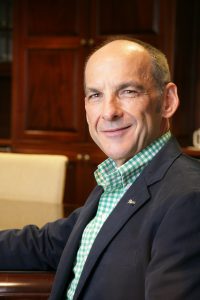
TAMPA, Fla. (Mar. 22, 2017) – The Florida Inventors Hall of Fame announced today that the Florida Institute for Human and Machine Cognition co-founder and CEO Ken Ford is among the eight inventors who will be inducted into the 2017 Florida Inventors Hall of Fame in September.
Ford is being recognized for his pioneering work in artificial intelligence and human-centered computing as well as his significant contributions to the United States and Florida’s technology and research communities. The Hall of Fame particularly highlighted Ford’s role in the 1990 co-founding of IHMC.
The not-for-profit research institute, which is headquartered in Pensacola and has a second location in Ocala, has grown into one of the world’s premier research organizations. Ford was instrumental in bringing scientists and engineers from around the globe to Florida and IHMC to investigate a board range of topics related to building technological systems aimed at amplifying and extending human cognition, perception, locomotion and resilience.
“The list of inductees and their accomplishments is quite amazing,” said Ford. “I am very honored to be included with such a distinguished group of people.”
Ford holds two patents and is the author of hundreds of scientific papers and six books whose topics include artificial intelligence, cognitive science, human-centered computing, and entrepreneurship in government and academia. He joins others from IHMC who have been inducted, including IHMC senior research scientist Jerry Pratt who was inducted into the 2015 Hall of Fame class; William Dalton, IHMC’s board chair who was part of the 2016 class, as well as Dwayne McCay, who joins Ford in this year’s class and is a member of IHMC’s scientific advisory board.
Ford has had a wide-ranging career. In January 1997, he was asked by NASA to develop and direct its new Center of Excellence in Information Technology at the Ames Research Center in Silicon Valley, where he also served as associate center director. In 1999, Ford was awarded the NASA Outstanding Leadership Medal. That same year, he returned to private life in Florida and to IHMC.
In 2002, President George W. Bush nominated Ford to serve on the National Science Board. In 2005, Ford was appointed and sworn in as a member of the Air Force Scientific Advisory Board. In 2007, he became a member of the NASA Advisory Council and in 2008 he was named chairman – a capacity in which he served until October 2011. In 2010, Ford was awarded NASA’s Distinguished Public Service Medal, the highest honor the agency confers.
In 2012, Dr. Ford was named to a two-year term on the Defense Science Board and in 2013 he became a member of the Advanced Technology Board, which supports the Office of the Director of National Intelligence.
This year’s Hall of Fame class also includes Michael J. DeLuca for his groundbreaking technology known today as “voltage scaling,” which significantly increased the battery life of portable communication devices, and the Hall of Fame’s first scientific couple, Drs. T. Dwayne and Mary Helen McCay, who hold 15 joint U.S. patents and have greatly contributed to increased patient safety and improved medical outcomes in facilities nationwide. Other induces include:
Issa Batarseh, whose innovative research led to the creation of the first compact single solar photovoltaic (PV) panel; Phillip Frost, physician, inventor, and internationally-lauded businessman who invented a revolutionary disposable punch biopsy tool; Richard Gitlin, for his inventive research and development in digital communications, broadband networking, and wireless systems; and the late Thomas Maren, for inventing Trusopt®, the first commercialized topical treatment for glaucoma.
Dr. Ford will be inducted at the Florida Inventors Hall of Fame Fourth Annual Induction Ceremony and Gala on Sep. 8 at the Hilton Tampa Downtown.
“We are delighted to be announcing this class of exceptional inventors whose work has greatly impacted Florida and our nation,” said Randy Berridge, who serves on the Florida Inventors Hall of Fame advisory board and as chair of the selection committee.
Nominees, who must have at least one U.S. patent and a connection to Florida, were nominated through an open nomination process and elected by a selection committee comprising distinguished leaders in research and innovation throughout Florida.
“Collectively, the 2017 inductees hold more than 260 U.S. patents,” said Berridge, “Among them are two industry inventors, the founder of one of the nation’s premier research institutes, and representatives of four Florida universities.”
“The accomplishments of this year’s inductees have been recognized by national and international organizations with many other honors and awards,” said Paul R. Sanberg, chair of the Florida Inventors Hall of Fame advisory board, senior vice president for research, innovation and economic development at the University of South Florida, and a 2015 inductee. “We are honored to be inducting them into the Hall of Fame.”
The Florida Inventors Hall of Fame was recognized by the Florida Senate in 2014 with a resolution sponsored by Senator Jeff Brandes that commended the Hall of Fame “for its commitment to honoring inventors and celebrating innovation, discovery, and excellence.” The Hall of Fame is located at the University of South Florida in Tampa and supported, in part, by the Florida High Tech Corridor Council.
More information is at www.FloridaInvents.org or contact info@FloridaInvents.org.
Inventors Academy Honors Prolific IHMC Scientist
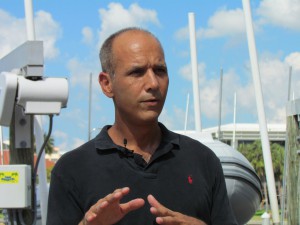 Published 12.13.16
Published 12.13.16
David Fries has been named a prestigious Fellow of the National Academy of Inventors (NAI). David is an interdisciplinary research scientist at the Florida Institute for Human and Machine Cognition (IHMC) and an expert and true innovator in undersea technologies, especially microsystems and robotics for sensing applications, advanced sensor development, and mobile robotic systems for field applications. He holds more than 35 U.S. patents, 13 of which have been licensed to seven separate companies.
David was cited as having “demonstrated a highly prolific spirit of innovation in creating or facilitating outstanding inventions that have made a tangible impact on quality of life, economic development, and the welfare of society.” The NAI was founded in 2010 “to recognize investigators at universities and non-profit research institutes who translate their research findings into inventions that may benefit society,” according to the group’s website.
In addition to his research at IHMC, David is the co-founder of Intelligent Micropatterning LLC, the co-founder and CTO of Spyglass Technologies, Inc., the founder of non-profit SciFlies.org, and the co-founder of Guided Particle Systems, Inc. He has published more than 60 technical articles and has been featured in more than 50 media articles and broadcasts.
Fries is a member of the Marine Technology Society, the American Association for the Advancement of Sciences, the American Chemical Society, and the Oceanography Society. He was an original member of the University of South Florida’s Center for Ocean Technology, where he began the field of underwater mass spectrometry. He also sits on the Board of Directors of the Thunderdome Project, and several other non-profit service organizations.
The NAI Fellows Program currently has 582 Fellows worldwide representing more than 190 universities and governmental and non-profit research institutions. Collectively, the Fellows hold more than 21,000 issued U.S. patents.
NAI Fellows now include more than 80 presidents and senior leaders of research universities and non-profit research institutes, 313 members of the other National Academies (NAS, NAE, IOM), 27 inductees of the National Inventors Hall of Fame, 36 recipients of the U.S. National Medal of Technology and Innovation and U.S. National Medal of Science, 27 Nobel Laureates, 14 Lemelson-MIT prize recipients, 170 AAAS Fellows, and 98 IEEE Fellows. IHMC Director and CEO Ken Ford was named a Charter Fellow in 2012.
David Fries will be inducted during the 6th Annual Conference of the National Academy of Inventors on April 6, 2017, at the John F. Kennedy Presidential Library and Museum in Boston, MA.
Dr. Bonnie Dorr Cited for High Honor
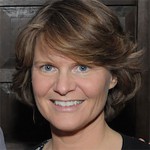 Published 12.5.16
Published 12.5.16
Dr. Bonnie Dorr, associate director and senior research scientist at the Florida Institute for Human & Machine Cognition (IHMC), has been named a fellow of the Association for Computational Linguists (ACL). She is one of four people to be named to this year’s class of ACL fellows. The honor is in recognition of Dorr’s contributions to the field of computational linguistics.
“Bonnie’s work over the years has certainly earned her this well-deserved recognition,” said Ken Ford, the founder and chief executive of IHMC. “She is an exceptional scientist and colleague who has contributed greatly to the advancement of computational linguists.”
In naming Dorr one of its 2016 fellows, ACL specifically highlighted her “significant contributions to machine translation, summarization and human evaluation.” Dorr’s research spans several areas of broad-scale multilingual processing, including machine translation, summarization, and cross-language information retrieval.
Dorr, a professor emeritus of computer science, leads a team of scientists and researchers at IHMC’s Ocala facility. Dorr is the former associate dean of the College of Computer, Mathematical, and Natural Sciences at the University of Maryland. She co-founded the Computational Linguistics and Information Processing Laboratory at Maryland, and served as its co-director for 15 years.
In 2008, she was named president of the ACL. Additionally, she is a Sloan Fellow, an Association for the Advancement of Artificial Intelligence’s (AAAI) Fellow, and a National Science Foundation Presidential Faculty (PECASE) Fellow. Established in 2011, the ACL Fellows program recognizes ACL members whose contributions to the field have been most extraordinary.
The Florida Institute for Human & Machine Cognition (IHMC) is one of the nation’s premier research organizations with world-class scientists and engineers investigating a broad range of topics related to building technological systems aimed at amplifying and extending human cognitive, perceptual, and physical capacities. IHMC headquarters are in Pensacola, Florida, with a branch research facility in Ocala, Florida.
IHMC Wins Silver Medal in Cybathlon
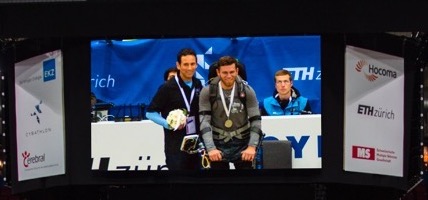
Published 10.13.16
In a weekend international showdown, the Florida Institute for Human & Machine Cognition (IHMC) robotics team once again demonstrated its brawn as it placed a strong second in the powered exoskeleton division of the first annual Cybathlon. Held October 8th, in Zurich, Switzerland, the Cybathlon is a global competition for disabled athletes aided by wearable robotic devices. The unique competition hosted 66 teams from across the globe, competing in six distinct divisions.
Using the Mina v2 exoskeleton, developed at IHMC’s research facility in Pensacola, Florida, the IHMC pilot athlete was Mark Daniel. Daniel, who grew up in Pensacola, suffered a spinal cord injury in 2007 as a result of a car accident, which left him paralyzed. He began assisting the IHMC research team in 2010, with the evaluation and testing of powered exoskeletons.
Senior Research Scientist Peter Neuhaus, the lead researcher on the project, said, “I am very proud of our team’s Silver Medal finish in the Powered Exoskeleton race. This competition was open to researchers and companies throughout the world, and to finish just behind an established company affirms our position in the field.”
German-based company ReWalk won first place in the competition, represented by Andre Van Ruschen, who also suffered a spinal cord injury due to a car accident. Nine teams from around the world competed in the exoskeleton division event, with IHMC being the only team from the United States to compete and place.
“The team worked hard getting the software and hardware ready, and Mark’s ceaseless training paid off,” Neuhaus continued. A true athlete in mind, spirit, and body, Daniel rolled his wheelchair up to fifteen miles a day and swam to prepare for the event.
The powered exoskeleton competition was comprised of a race among the athletes that included six tasks with a ten-minute time limit. The robotic-assisted tasks included sitting down and standing back up from a sofa; walking through a slalom course without hitting the poles; climbing a ramp and opening a door; walking up and down stairs; and walking on a path landing the feet on random flat stones.
There were five other disciplines beyond the exoskeleton division at the packed event, which welcomed over 4,600 visitors and 66 teams. It was held at the SWISS Arena Kloten and organized by the Swiss Federal Institute of Technology. The main sponsor for the competition was Hocoma, the maker of Lokomat and other rehabilitation exoskeletons.
Supporting the IHMC team were local sponsors to include Stormy Dawn Anderson, Scivation Inc., the William and Karen Dalton Family, Allied Motion, Futek, Elmo Motion Control, Lord MicroStrain Sensing, inTec and Star Prototype.
Neuhaus said the Cybathlon marks an important step in IHMC’s long-term research goals in exoskeletons. The Cybathlon win is the most recent in a string of many for the IHMC robotics team. In June 2015, the team took second place in the world, and first place among teams from the United States, in the DARPA Robotics Challenge. “While it is impressive what we, as a community, have accomplished and demonstrated so far, we have a long way to go with regard to restoring mobility with robotic devices for people with paralysis,” Neuhaus said. “Our goal is to continue to make advancements in mobility assistance through cutting edge research.”
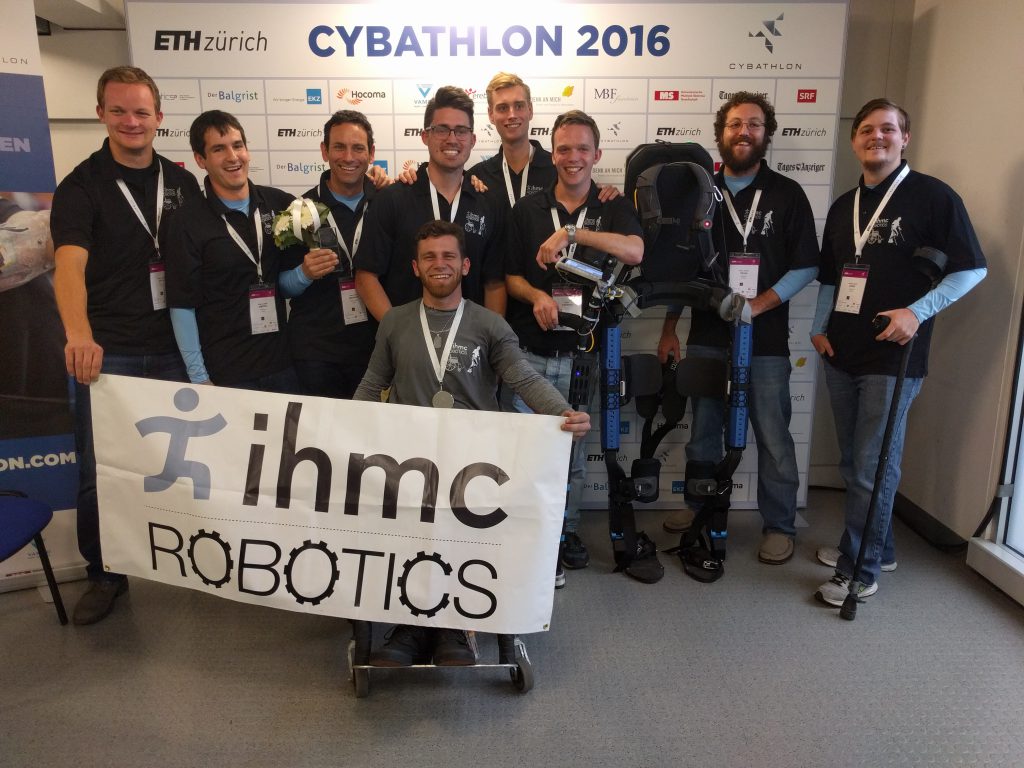
IHMC Dedicates Innovative “Levin Center for IHMC Research”
Published 9.26.16
The Florida Institute for Human and Machine Cognition, (IHMC), officially opened its new, state of the art research facility named after Fredric Levin, a prominent, successful Pensacola businessman and lawyer. On Monday, Sept. 26, 2016, IHMC hosted a building dedication, ribbon cutting, and unveiled the name of the building followed by an open house and tours of the new facility.
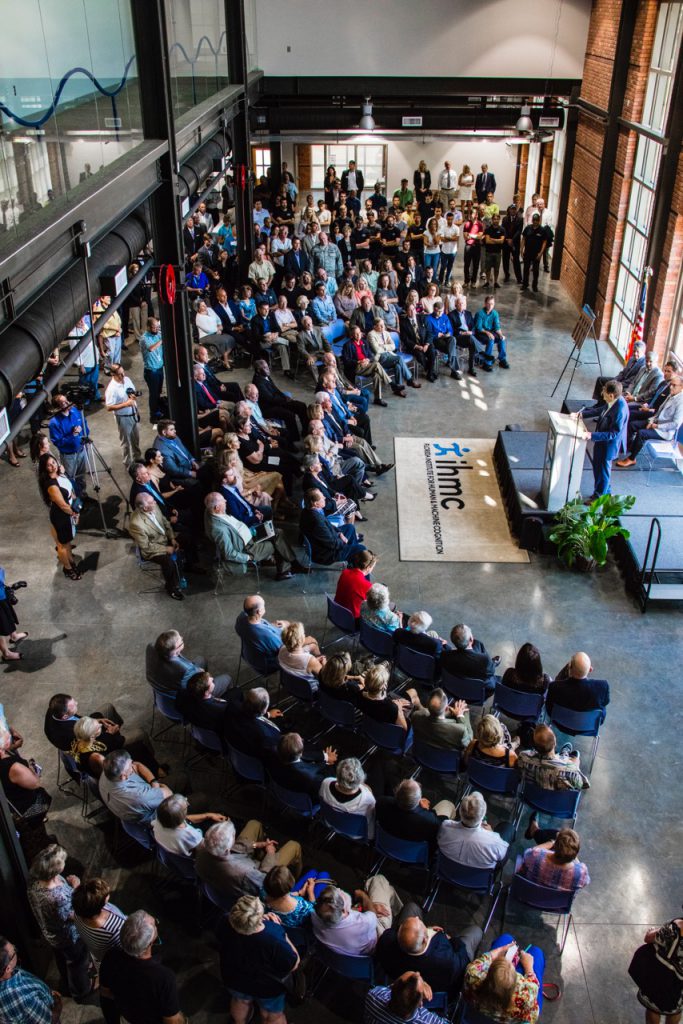
The event, attended by several hundred people, was hosted by IHMC Director, Dr. Ken Ford and the IHMC Board of Directors and emceed by IHMC’s Dr. Pamella Dana. Also speaking at the event was the IHMC Board Chair Bill Dalton, Escambia Board of County Commissioners Chair Grover Robinson, Pensacola Mayor Ashton Hayward, and IHMC CEO Ken Ford. The donor, Fredric Levin, who made a one million dollar cash gift to IHMC, was the keynote speaker at the event.
“The opportunities facilities like the IHMC offer Pensacola are amazing,” said Levin. “IHMC is bringing brilliant researchers to our area where people can learn and benefit from them in a wide range of areas, like robotics, medicine, and technology. My $1 million dollar donation is for not only the future of our community, but for the benefit of all mankind.”
“It’s an exciting moment in IHMC history,” said IHMC Director Dr. Ken Ford, noting this is the institute’s first new building since it was founded in 2004. The building, with a physical address of 420 East Romana Street, is adjacent to IHMC’s current main building at 40 S. Alcaniz St., which IHMC will continue to use. The $8 million dollar building was constructed by Hewes & Company, LLC and designed by Pensacola’s Quina Grundhoefer Architects. IHMC will use the 30,000 square foot facility to consolidate other research locations, including the Wright Street Robotics Lab.
Under Dr. Ford’s leadership, IHMC has grown into one of the nation’s premier research organizations with world-class scientists and engineers investigating a broad range of topics related to building technological systems aimed at amplifying and extending human cognitive, physical and perceptual capacities. Its headquarters are in Pensacola, Fla., with an associated research facility in Ocala, Fla.
The first floor of the Levin Center for IHMC Research houses both a robotics and exoskeleton high bay laboratory and a sensory substitution lab. The second floor observation corridor showcases a glass wall that overlooks the high bay robotics laboratory that will offer youth and area visitors viewing access to state of the art robotics work. The second and third floors also include conference rooms, offices, a boardroom, and future lab space. There is a rooftop deck offering excellent views of Downtown Pensacola in all directions.
Over the years Fred Levin has given more than $20 million to local charitable and community based organizations. He and his sister-in-law Teri, gave $1 million to the YMCA of Northwest Florida for a new facility, he gave $500,000 to build the Marilyn Kapner Levin Center for Children’s Advocacy and Child Abuse Prevention which houses the Gulf Coast Kid’s House, $100,000 to the new UWF Argo Football program, and to date, another $2.5 million to other organizations like Loaves and Fishes Soup Kitchen, Habitat for Humanity, Sacred Heart Children’s Hospital, and Escambia Westgate Center. He is best known for rewriting Florida’s Medicaid Third-Party Recovery Act to allow the State of Florida to sue and recover billions of dollars from the tobacco industry for smoking related illnesses. The Fredric G. Levin College of Law at the University of Florida was named for him after Mr. Levin donated $10 million to the school in 1999.
Among his many accomplishments, Mr. Levin was named The Trial Lawyer of the Year by the National Trial Lawyers for 2015. He was also inducted into the Trial Lawyers Hall of Fame in 2009, which is located at Temple Law School in Philadelphia. Fred Levin is also a member of the Inner Circle of Advocates, an organization limited to 100 of the top trial attorneys in the country, and has been listed in every edition of the publication Best Lawyers in America. A biography of his life was published in 2014, titled, ‘And Give up ShowBiz? How Fred Levin Beat Big Tobacco, Avoided Two Murder Prosecutions, Became a Chief of Ghana, Earned Boxing Manager of the Year & Transformed American Law.’
For more about Fred Levin visit https://www.levinlaw.com/attorney-profiles/fredric-levin.
Dawn Kernagis Joins NASA’s Undersea Mission
Published 6.22.16
Dr. Dawn Kernagis, a Research Scientist at the Florida Institute for Human and Machine Cognition (IHMC) and host of STEM-Talk, has been chosen as one of six crew members to join NASA’s undersea analog mission, NEEMO (NASA Extreme Environment Mission Operations).
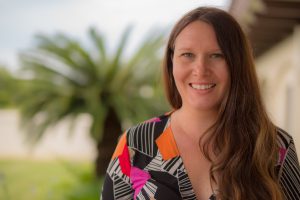 Living on the bottom of the Atlantic Ocean, the 21st NEEMO crew will focus on evaluating tools and techniques being tested for future space exploration by living in simulated spacecraft conditions and conducting simulated spacewalks outside of their undersea habitat. The NEEMO 21 crew and two professional habitat technicians will live 62 feet (19 meters) below the surface of the Atlantic Ocean at the The Aquarius Undersea Reef Base, owned and operated by Florida International University under permit by NOAA and the Florida Keys National Marine Sanctuary.
Living on the bottom of the Atlantic Ocean, the 21st NEEMO crew will focus on evaluating tools and techniques being tested for future space exploration by living in simulated spacecraft conditions and conducting simulated spacewalks outside of their undersea habitat. The NEEMO 21 crew and two professional habitat technicians will live 62 feet (19 meters) below the surface of the Atlantic Ocean at the The Aquarius Undersea Reef Base, owned and operated by Florida International University under permit by NOAA and the Florida Keys National Marine Sanctuary.
Inside the habitat, the international crew will conduct a variety of research and operational studies, such testing a mini DNA sequencer and a medical telemetry device that will be used for future space applications. During their simulated spacewalks, the crew will collect samples for marine biology and geology studies, team with underwater remote operating vehicles, test operational software, and participate in a coral restoration project. Throughout many of these tasks, the mission will also test time delays in communications to simulate scenarios often encountered in space exploration.
NASA astronaut Reid Wiseman will command the first 8 days of the NEEMO 21 mission aboard the Aquarius laboratory. Wiseman flew in space as part of Expedition 40/41 in 2014, spending 166 days living and working in the extreme environment of microgravity aboard the International Space Station. Wiseman was a naval aviator and test pilot prior to joining NASA in 2009.
NASA astronaut Megan McArthur Behnken will command the second half of NEEMO 21 and will live in the habitat for the entire 16-day mission. Behnken has served as a Capsule Communicator for both the space shuttle and space station, and she flew on the STS-125 shuttle mission in 2009. Prior to joining NASA, Behnken obtained her PhD in Oceanography at Scripps Institution of Oceanography.
Joining Behnken for the entire 16 days is Matthias Maurer (European Space Agency). For the first 8 days, Marc O’Griofa (Veterans Administration researcher) will also join Wiseman, Behnken, and Maurer. For the second half of the mission, Behnken and Maurer will be joined by Kernagis and Noel Du Toit (Naval Postgraduate School researcher).
Kernagis is thrilled to have the opportunity as a crew member to combine her background as a diver and a biomedical researcher, and she anticipates a very productive and exciting mission. “The NEEMO 21 crew, researchers, and support staff are the best of the best, and I have no doubt that it will be an incredible mission. We will be conducting a wide array of scientific studies and operational evaluations that will provide a tremendous amount of information for future space exploration and research.” In addition to her participation as a crew member, Kernagis will also be conducting a study to investigate changes to the gut bacteria and to human genes in response to living in such an extreme environment. This research is not only of interest for astronaut health and performance, but also for military and commercial divers who live and work for extended periods of time in similar environments.
IHMC CEO and Director Ken Ford commented on Dawn’s exciting opportunity stating that “through her rare combination of technical diving and scholarly research capabilities, Dawn is leading us into a new field of study at the institute, namely the optimization of human performance, resilience and safety in extreme environments.”
At IHMC, Kernagis studies new ways to optimize performance and resilience for humans operating in extreme environments, such as undersea divers, high altitude aviators, and astronauts. She completed her PhD at Duke University, where she received Office of Naval Research funding to study the genetics of decompression sickness in divers. As a postdoctoral researcher at Duke, she received additional ONR funding to study the mechanisms of oxygen toxicity in divers and a Fellowship Award from the American Heart Association for her clinical development of a neuroprotective therapeutic for acute brain injury.
From 1996 – 2007, Kernagis was a diver and manager with the world-record breaking deep underwater cave exploration team; she has been a diver and consultant for numerous diving exploration and research projects around the world since 1996. Based on her career in underwater exploration and research, Kernagis was recently inducted into the Women Divers Hall of Fame, Class of 2016.
IHMC Designated Bronze-level Bike-Friendly Workplace
 Published 5.17.16
Published 5.17.16
IHMC is officially a bike-friendly work place.
The League of American Bicyclists recognized IHMC as a bronze level Bicycle Friendly Business (BFBSM). IHMC joins a cutting-edge group of nearly 1,200 local businesses, government agencies and Fortune 500 companies across the United States that have a bike-friendly designation. “The business community’s investment in bicycling is playing a central role in making the country a safer, happier, and more sustainable place to live and work,” said Amelia Neptune, League Bicycle Friendly Business Program Manager. “We applaud this new round of businesses, including IHMC, for leading the charge in creating a bicycle-friendly America for everyone.”
The designation lasts for four years, and is renewable thereafter. Before that, IHMC can re-apply for a higher designation. Tim Bustos, Principal at Sustainable Transportation Planning & Design commented, “On behalf of Bike Pensacola, I’d like to congratulate IHMC on being awarded a “Bicycle Friendly Business” award at the “Bronze Level.” The criteria developed by LAB is challenging at best, so many businesses don’t even get an “honorable mention” the first time they apply. The fact that IHMC came in at the Bronze level the first time around demonstrates their commitment to a more bikeable community, and all area residents benefit from their efforts.”
Several IHMC employees bike to and from the Pensacola location, and the Institute has its own bikes for employees to use. In Ocala, research scientist Kristy Hollingshead frequently bikes to work.
“IHMC is actually one of the best places I’ve worked at in terms of how easy and convenient it is to bike to work. The bike parking is easily accessible, closer even than the parking lot, and we have showers (and even a hair dryer!) for those hot and sticky Florida days,” Hollingshead said. “It’s a great way to start the day, cruising through the local neighborhoods and seeing the morning light on the ponds in Tuscawilla park, and a peaceful way to end the work day. I get in some exercise, save on gas, and keep my car’s mileage down – a win-win-win in my book!”
In Pensacola, research associate Tim Hutcheson rides his bike to work each day, including home for lunch midday. “I’m particularly fortunate that IHMC is only about 4 miles from my house, so I have a quick ride and hardly work up a sweat – but it’s enough to get aerobic four times a day. Using the back streets and sidewalks, I get a chance to think about my job at the institute. Some of my most creative ideas come to me while riding the bike. And I get the fun of dodging the crazy baby squirrels just out of the nest in the spring. Great way to start and finish the day!”
IHMC is also proudly participating as a Pensacola refreshing station offering breakfast and robotics lab tours to people biking to work on Bike to Work Day this Friday, May 20, 2016 between 7 and 9:30 am.
Learn more about the League’s Bicycle Friendly Business program at bikeleague.org/business.
Dalton Inducted to 2016 Florida Inventors Hall of Fame
IHMC Board of Directors Vice Chair Dr. William Dalton to be Inducted into 2016 Florida Inventors Hall of Fame
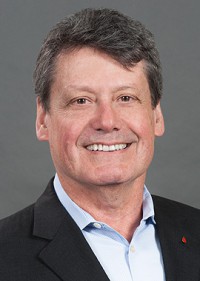 TAMPA, Fla. (Mar. 15, 2016) –Dr. William (Bill) Dalton, Founder and CEO of M2Gen®, a subsidiary of Moffitt Cancer Center & Research Institute in Tampa, and Vice Chairman of the IHMC Board of Directors is among the seven inventors announced today as the 2016 inductees of the Florida Inventors Hall of Fame.
TAMPA, Fla. (Mar. 15, 2016) –Dr. William (Bill) Dalton, Founder and CEO of M2Gen®, a subsidiary of Moffitt Cancer Center & Research Institute in Tampa, and Vice Chairman of the IHMC Board of Directors is among the seven inventors announced today as the 2016 inductees of the Florida Inventors Hall of Fame.
Bill Dalton was nominated and approved as an inductee for his revolutionizing developments in cancer treatment and he will be inducted at the Florida Inventors Hall of Fame 3rd Annual Induction Ceremony & Gala on Sep. 16, 2016, in Tampa.
Nominees, who must have at least one U.S. patent and a connection to Florida, were nominated through an open nomination process and elected by a selection committee comprising distinguished leaders in research and innovation throughout Florida. Bill will join IHMC Senior Scientist and Inventor Dr. Jerry Pratt who was inducted into the Florida Hall of Fame in 2015.
“We are delighted to be announcing this class of exceptional inventors whose work has greatly impacted Florida and our nation,” said Randy Berridge, who serves on the Florida Inventors Hall of Fame advisory board and as chair of the selection committee. “Collectively, the seven 2016 inductees hold more than 90 U.S. patents,” said Berridge, who is also president of the Florida High Tech Corridor Council. “Among them are representatives of two storied U.S. agencies, a non-profit research institute, and five Florida research universities.”
“The high merit of this year’s inductees has been recognized by national and international organizations with many other honors and awards,” said Paul R. Sanberg, chair of the Florida Inventors Hall of Fame advisory board and a 2015 inductee. “We are honored to be inducting them into the Hall of Fame.”
The Florida Inventors Hall of Fame was recognized by the Florida Senate in 2014 with a resolution sponsored by Senator Jeff Brandes that commended the Hall of Fame “for its commitment to honoring inventors and celebrating innovation, discovery, and excellence.”
The 2016 inductees of the Florida Inventors Hall of Fame are:
William S. Dalton is the founder and current CEO of M2Gen®, a subsidiary of Moffitt Cancer Center & Research Institute in Tampa, where he previously served as president and CEO, and was founder and chair of the Department of Interdisciplinary Oncology at the University of South Florida. Dalton is being recognized for his revolutionizing developments in cancer treatment and research in molecular mechanisms of drug resistance that led to the creation of Total Cancer Care™: personalized protocols for the treatment of cancer and information/decision tools used by clinicians worldwide. To date, Total Cancer Care™ has impacted the lives of over 120,000 patients and includes one of the largest bio-repositories and data warehouses in the U.S., dedicated to the improvement of personalized medicine. Dalton holds 10 U.S. patents.
D. Yogi Goswami, Distinguished University Professor of chemical engineering and director of the Clean Energy Research Center at the University of South Florida in Tampa, is being recognized for his pioneering contributions and technology development related to solar energy and indoor air quality. Goswami’s contributions in combined power/cooling cycles have impacted global research in a new class of thermodynamic cycles. He has invented nano-scale antenna technologies to convert sunlight to power and thermal energy storage technologies. He also founded Transformair, Inc., which is commercializing his technology to destroy indoor air pollutants including viruses, bacteria, mold, airborne fumes and allergens, which is helping allergy and asthma sufferers worldwide. Goswami holds 16 U.S. patents.
Alan George Marshall, professor of chemistry and founding director and chief scientist of the Ion Cyclotron Resonance (ICR) Program at Florida State University in Tallahassee, co-invented and leads continuing development of the Fourier Transform Ion Cyclotron Resonance (FT-ICR) mass spectrometry, which aids in the study of molecular structure and the composition of cells. Marshall holds 8 U.S. patents and his inventions created an entirely new arena of discovery in a broad range of fields, from petroleum analysis to biomedicine. His original patents spawned the first commercial instrument (Nicolet Instrument Corp.) and subsequent FT-ICR instruments from other companies, with more than 800 FT-ICR instruments installed worldwide.
Nicholas Muzyczka, professor of microbiology and the Edward R. Koger Eminent Scholar for Cancer Research at the University of Florida in Gainesville, is recognized for his pivotal invention of the “granddaddy patent” for recombinant adeno associated virus (rAAV) vectors. Muzyczka’s lab created a breakthrough with successful production of the AAV2 genome and AAV vectors. He holds 15 U.S. patents and his research led to potential therapies for neurodegenerative, pulmonary, cardiovascular, and eye diseases. In 1994, he became founding director of Powell Gene Therapy Center, making UF one of the leading institutions in AAV gene therapy. In 2001, Muzyczka founded Applied Genetic Technologies Corp (AGTC), a Florida-based company that commercializes gene therapy applications.
Jacqueline W. Quinn is a NASA environmental engineer who leads diverse environmental chemistry research at the Kennedy Space Center in Cape Canaveral, Fla. Quinn invented NASA’s most licensed and recognized technology for groundwater remediation, Emulsified Zero Valent Iron (EZVI). Additional environmental remediation methods created by Quinn include AMTS and SPEARS, used for removal of cancer-causing PCBs (polychlorinated biphenyls) in materials, soils and sediments. Quinn holds 12 U.S. patents and her technologies have been licensed by companies throughout the United States and internationally.
Andrew V. Schally, Nobel Laureate and Distinguished Medical Research Scientist at the U.S. Department of Veterans Affairs, Distinguished Professor of pathology at the University of Miami, and chief of the Miami Veterans Affairs Medical Center Endocrine, Polypeptide and Cancer Institute, Schally received the 1977 Nobel Prize in Physiology or Medicine and was elected to the National Academy of Sciences in 1978 for his discovery of hypothalamic hormones. Subsequently he pioneered the application of analogues of hypothalamic hormones to cancer treatment, including the therapy of prostate cancer with agonists of LHRH used worldwide. Schally holds 32 U.S. patents licensed to 5 companies and is author or co-author of more than 2,400 publications.
M.J. Soileau, vice president for research and commercialization and professor of optics and photonics, electrical and computer engineering, and physics at the University of Central Florida in Orlando. He is being recognized for his pioneering research in nonlinear interaction of laser pulses with optical materials and for leading the development of the internationally recognized Center for Research and Education in Optics and Lasers (CREOL) at UCF. Soileau holds 6 U.S. patents, the applications of which have contributed to the advancement of high energy laser optics used by the United States Department of Defense.
More information is at www.FloridaInvents.org or contact info@FloridaInvents.org.
About the Florida Inventors Hall of Fame
The Florida Inventors Hall of Fame (FIHF) recognizes and commends Florida inventors whose achievements have advanced the quality of life for Floridians, the state and the nation. Founded in 2013 and housed in the USF Research Park in Tampa, FIHF was recognized by Florida Senate Resolution 1756 in April of 2014. FIHF encourages individuals of all ages and backgrounds to strive toward the betterment of Florida and society through continuous, groundbreaking innovation, and, by commending the incredible scientific work being accomplished in the state, to further the growth of Florida’s innovation sector. FloridaInvents.org
Media Contact: Holly Behrend, 813-974-8772, hollybehrend@floridainvents.org
Nova: Rise of the Robots
Published 2.24.16
The Running Man is at it again.
IHMC’s “Atlas robot,” which placed second in the Defense Advance Research Projects Agency (DARPA)-sponsored international robotics competition last summer, will be featured in a NOVA documentary this evening, Wednesday, Feb. 24th, called “Rise of the Robots.”
It explores how robots are gradually making their way into the real world, with questions such as: “How close are we to a future where humanoid robots are part of our everyday lives? What are the implications of a future with robots that can do a human’s job?”
The DARPA competition, held last June in Pomona, California, involved 23 teams from around the world, whose robots competed against each other in completing eight tasks such as driving a car and cutting a hole in the wall.
A South Korean robot, DRC-HUBO, placed first, finishing six minutes faster than IHMC’s Atlas, the 6’2” robot weighing more than 380 pounds. Built by Boston Dynamics, the IHMC team, led by Jerry Pratt, John Carff, Peter Neuhaus and Matt Johnson, spent several years working on the robot’s software and controls.
IHMC researchers continue to run the robot everyday, tasking Atlas with new challenges such as vacuuming, sweeping, dancing, and having the robot engage in a minute of autonomous activity.
To watch the NOVA film trailer:
For more information on the NOVA documentary, contact Jennifer Welsh, the public relations person for NOVA: jennifer_welsh@wgbh.org ; 617-300-4382.
For more information on Atlas, contact IHMC writer/communications manager Kristine Crane: kcrane@ihmc.us ; 352-387-3057.
Bill Clancey Named NAI Fellow
Published 12.15.15
As a mathematical sciences major at Rice University in the 1970s, William “Bill” Clancey took courses in 13 different departments—ranging from philosophy and anthropology to art and music.
But it was a cover story in Life Magazine about Shakey, the first robot who could analyze and carry out consecutive commands, that opened up Clancey’s world onto the newly emergent field that he would spend much of his career working on: artificial intelligence.
Clancey was especially interested in the philosophical and psychological underpinnings of artificial intelligence, pondering questions such as: What is the nature of knowledge? What can computers do? Can knowledge be converted into a program?
“You really need to understand people and psychology if you are going to build a smart machine,” he said.
Those initial insights led Clancey down the path of a brilliant career that includes holding six patents and establishing two software companies.
Most recently, Clancey, a senior research scientist with the Florida Institute for Human and Machine Cognition (IHMC), was named a Fellow of the National Academy of Inventors (NAI).
The Tampa-based Academy named a total of 168 Fellows this week, bringing the total number of Fellows to 582. This is the fourth year that Fellows have been named.
IHMC CEO and Director Ken Ford, who is also an NAI Fellow, said, “Bill joins a league of highly distinguished scientists with this recognition. He has made landmark contributions to artificial intelligence research, specifically in evaluating complex human-automation interaction in safety-critical situations.”
Clancey is most well-known for developing a work practice modeling and simulation system called Brahms, a tool for comprehensive design of work systems, relating people and automation.
Using the Brahms modeling system, scientists study the flow of information and communications in real-world work settings, and the effect of automated systems. One important practical application is the coordination among air traffic controllers, pilots and automated systems during flights.
The Brahms system, for example, could be used to help prevent miscommunication when it most matters, or as Clancey said, where “every single second counts.”
One striking example of a situation in which Brahms might have saved the day had it been applied was the mid-air collision between two planes in Überlingen, Germany in 2002 that killed 71 people. The pilots on the two planes received conflicting information from the traffic collision avoidance system (TCAS) and the air traffic controllers, leading to the collision.
“Before TCAS was deployed commercially, engineers verified that the program would give the right advice to separate the planes. What they didn’t consider is if the air traffic controllers gave conflicting advice at the same time,” Clancey said. “This is where Brahms comes in.”
Brahms could simulate, second-by-second, what pilots, air traffic controllers, and others are doing. “It simulates what is on their radar screens, who is talking to who on the radio…. You can see what is happening in a distributed way,” Clancey said.
“AI artificial intelligence systems become players in the overall choreography of what’s happening where many lives are at stake,” he continued. “The Brahms system is very broadly applicable to situations on earth, in air, in space or undersea.”
Notably, NASA applied Brahms to automate routine file communications between the International Space Station computers and support personnel at NASA centers. “In some humble way, if I could say, ‘Why do I deserve this?’ NAI Fellow … it would be the application we made using Brahms at NASA,” Clancey said.
Within the past few years, interest in Brahms has picked up across the government, he added.
“We’re just on the edge of government agencies starting to ask for proposals with this type of capability,” Clancey said. That’s not unusual, he added, since AI research has typically been a decade or two ahead of society’s readiness to apply it.
Clancey predicts that the application of these tools in the aviation world “is a story that’s going to be unfolding in the next few decades,” particularly as the air traffic control system incorporates satellite-based navigation.
Clancey also notes as a professional achievement his early involvement in a project called MYCIN, out of Stanford University. It was a system that attempted to diagnose patients based on reported symptoms and medical test results. Already way ahead of the game, MYCIN, at the outset of its development in the 1970s, was especially designed to prevent the over-prescription of antibiotics.
“If MYCIN had been deployed and used systematically, we might not have had the problem of super infections that we have today,” Clancey said.
Clancey is one of three scientists affiliated with IHMC, including Ford, to be named a NAI Fellow. Alain Rappaport, also a NAI Fellow, is on the IHMC Board of Directors.
The NAI Fellows will be inducted on April 15, 2016, as part of the Fifth Annual Conference of the National Academy of Inventors at the United States Patent and Trademark Office (USPTO) in Alexandria, Virginia.
Dawn Kernagis Inducted into Women Divers Hall of Fame
Published 12.8.15
When Dawn Kernagis went to the ocean for the first time as a nine-year-old, she knew that she wanted to explore its depths.
She had just moved from Iowa to North Carolina. “I became completely intrigued by the ocean,” she said. “I wanted to be a marine biologist. I started to read everything I could get my hands on.”
Her parents gave her scuba diving lessons as a birthday present when she turned fifteen, and she would spend the better part of the next two decades in the sea or studying it.
Recently, Kernagis, who is a Research Scientist at the Institute for Human and Machine Cognition (IHMC) in Pensacola, where her research focuses on risk mitigation for divers, was named one of six women who will be inducted into the Women Divers Hall of Fame (WDHOF) in 2016.
The WDHOF is a non-profit, professional honor society that recognizes outstanding women divers who have made substantial contributions to contributions to the exploration, understanding, safety and conservation of the underwater world. The society also provides financial assistance and mentorship to people interested in pursuing diving careers. Kernagis said she will be working on the scholarship committee, which grants 16 distinct scholarships for different types of diving and training each year.
Kernagis has been nominated for the honor before, and says that she has long admired the women in the Hall of Fame. “Some of them are women I’ve looked up to since middle school, when I first knew I wanted to dive.”
Kernagis’ cave diving career began with a cavern dive in Ginnie Springs when she was a sophomore in high school, and she has completed over 1400 dives.
She was a diver and Project Dive Manager for an international dive team exploring Wakulla Springs and the surrounding cave systems from 1996-2007, where she directed several world record-breaking deep cave dives, including the historic connection and swim-through cave dives between Turner Sink and Wakulla Springs in 2007.
Her experiences both in participating in cave dives and managing underwater exploration teams inspired her studies in undersea biomedical research, and her PhD research at Duke University was focused on identifying the role of that genetics play in decompression sickness in divers. In 2008, she was the first Predoctoral Award recipient from the Office of Naval Research’s (ONR) Undersea Medicine Program, and she has since received additional research awards from ONR on diving medical research.
At IHMC, Kernagis is developing new ways to optimize human performance and resilience in extreme environments, focusing on undersea diving operations.
IHMC CEO and Director Ken Ford, in his nomination letter on Kernagis for the WDHOF, wrote, “Through her rare combination of technical diving and scholarly research capabilities, Dawn is leading us into a new field of study at the institute, namely the optimization of human performance, resilience and safety in extreme environments.”
“Her studies have led us to focus on the identification of genetic predictors or markers of stress that may indicate an individual’s susceptibility to undersea threats such as oxygen toxicity and decompression sickness, as well as the development of novel therapies minimize the risk of these hazards affecting divers,” Ford continued.
“Dawn’s work has far reaching implications in that it applies to a wide variety of situations where the brain is responding to extreme environments, such as those encountered by high altitude aviators, astronauts, special operations forces, and elite athletes.”
Kernagis says she has never had a negative experience herself while diving, but “accidents can happen in those environments” she said, adding that proper training is crucial.
Nowadays, the diving that she does is more recreational. Her segue from diver to researcher has been a natural one, and the impetus is rooted in her childhood, she said.
She remembers playing the game “Why” with her father, in which every answer given has a ‘Why’ that follows. “He had the patience of a saint,” she said. “But I genuinely wanted to know. I see science as a different form of exploration. Research is a form of mental and knowledge-based exploration.”
Two other Florida-based divers—Patti Kirk Gross, a marine conservation educator and coral ambassador, and Ruth Petzold, an underwater photographer—are also being inducted into the WDHOF.
The induction ceremony will take place On April 2, 2016 at the Beneath the Sea (BTS) Awards Banquet in Secaucus, New Jersey.


